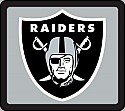
Recently, I talked about the Lost Cause myth. Southern artists produced tons of Lost Cause art that not only reinforced the Lose Cause myth but also pushed it on generation after generation. The image above shows General Robert E. Lee and many of his top generals but if you look closely a lot of them are key members of the Lost Cause or died during the war. Lets examine who is in the image first. Going from left to right the generals are, John B. Gordon, Stonewall Jackson, the man standing with his sword is A.P. Hill, General Lee, James Longstreet, Joseph E. Johnston and P. G. T. Beauregard. Lets examine each man and see why they are important to the Lost Cause Myth
Gordon, helped foster the myth along with his friend General Jubal Early. Without any prior military experience he rose from Captain to command a corps. He was wounded five times during the Battle of Sharpsburg and led the final Confederate march during the Confederate surrender. However, Gordon seemed to loom larger after the war than during it. He wrote a famous memoir about the war and I feel his addition here is the biggest fault of this painting.
Stonewall Jackson is an obvious addition because of his victories in Virginia and the fact that he died in the line of duty. Jackson's influence doesn't have to be discussed here because I am sure my readers have heard of his exploits.
A.P. Hill also died fighting for the Confederacy, and he saved the Confederate army at Antietam in 1862 so his addition here is fairly obvious. After his promotion to corp commander in 1863, Hill's career didn't have the same strength but as a division commander he was one of the best on either side. As the leader of a division Lee once called him the "best soldier of his grade".
A.P. Hill also died fighting for the Confederacy, and he saved the Confederate army at Antietam in 1862 so his addition here is fairly obvious. After his promotion to corp commander in 1863, Hill's career didn't have the same strength but as a division commander he was one of the best on either side. As the leader of a division Lee once called him the "best soldier of his grade".
Lee's addition is obvious. I find it interesting though that he has the only light coloured horse in he painting and he is front and center. He also appears to be the only figure in the painting to be going forward. It appears that his fellow officers are hesitant but not Robert E. Lee. He was perfect, he was the marble man, and he was the Lost Cause.
James Longsteet's addition is a shock but even as he quarreled with Early and others over his behaviour at Gettysburg he was beloved by his former soldiers. "Old Pete" Longsteet had a hand in a lot of Confederate victories and was Lee's second in command for most of the war. His addition is obvious
P. G. T. Beauregard and Joseph E. Johnston are mainly in the painting because of their victory at First Manassas. Also, Beauregard led the Confederate forces at Fort Sumter which ignited the Civil War in the first place. So these two men, despite their failures later in the war, were still held in high esteem during the post-war years. Beauregard's addition is unique because he spoke up for blacks after the war but the old Confederacy didn't raise a fuss about it.
JEB Stuart is leaning on his horse on the far right. The flamboyant Stuart is wearing his red-lined cape and looking like the a knight from Medieval times. The cavalry commander was killed in action during the war and was seen by post-war observers as one of the wars greatest commanders. It helped that he appeared to be so chivalrous in life because post-war writings only made Stuart even larger than life.
Perhaps another intersting fact about this painting is if you look at the casuality report for each man.
Killed:
(3) Jackson, Hill, Stuart
Wounded:
(5) Jackson (died of wounds), Stuart (died of wounds), Johnston, Gordon, Longstreet. (It was reported that Hill was killed instantly by a bullet through the heart so he doesn't count here.)
Finished the war unscathed:
(2) Lee, Beauregard




No comments:
Post a Comment